The ethereal allure of cave pearls
Unlike the pearls born in oysters, cave pearls originate through geological processes that unfold over centuries or even millennia. Their smooth, polished appearance and mesmerizing variety of shapes have long captivated explorers, geologists, and nature lovers.
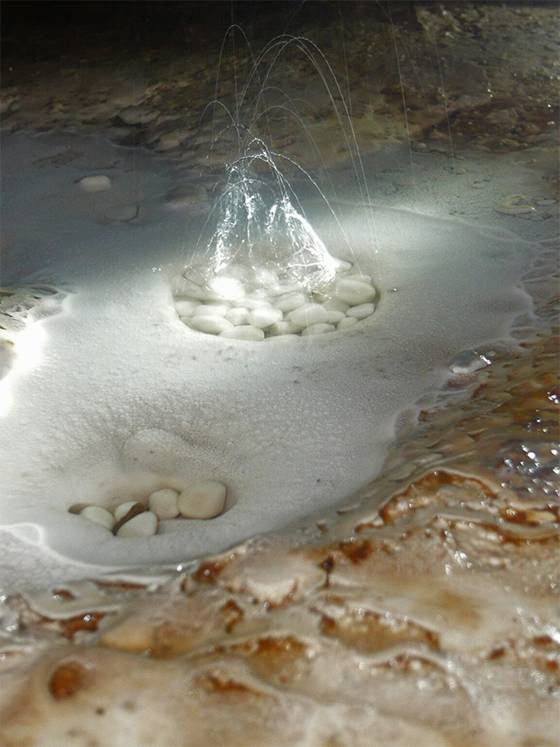
Understanding how these pearls form not only enhances their allure but also reveals intricate details about cave ecosystems and Earth’s natural history. In this article, we explore the formation, science, significance, and preservation of cave pearls, uncovering why these hidden gems of the underworld continue to inspire awe and curiosity.
What cave pearls are
Cave pearls are a rare and delicate type of speleothem, the mineral formations that adorn limestone caves. These pearls form when slightly acidic water dissolves calcium carbonate from cave walls and ceilings. As this mineral-rich water drips into shallow pools, it deposits calcite around a tiny central nucleus such as a grain of sand or fragment of organic debris. Over time, layers of calcite build upon one another, eventually forming a smooth, rounded pearl.
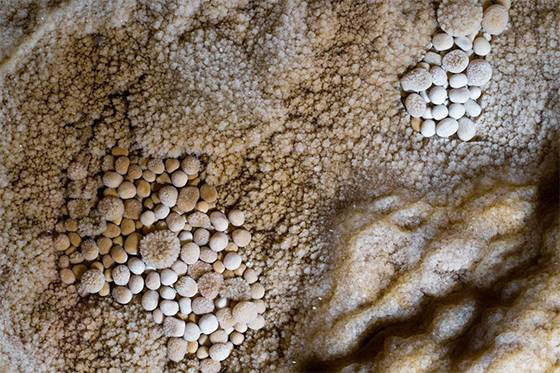
Although often spherical, cave pearls can also develop into cylindrical, cubical, or irregular shapes depending on water movement and environmental conditions. They range from tiny beads barely visible to the naked eye to stunning formations comparable in size to golf balls. Their rarity and delicate composition make them a treasured find for anyone exploring limestone cave systems.
How cave pearls form
The process behind cave pearl formation is a remarkable display of geological balance. As water drips into a shallow cave pool, it naturally loses carbon dioxide due to the stable air pressure and temperature underground. This chemical shift triggers the precipitation of calcium carbonate, which then adheres to the nucleus resting at the bottom of the pool.
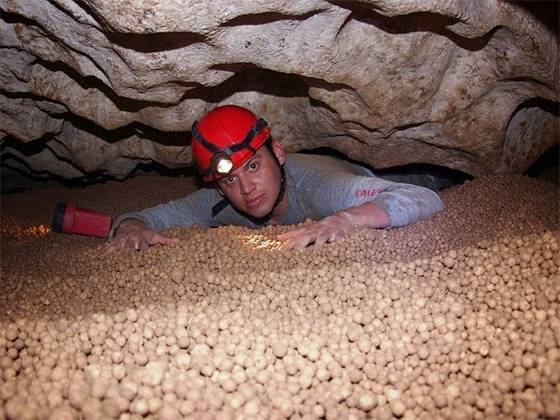
In many cases, gentle water flow keeps the developing pearl in constant motion. This slow rotation ensures that calcite layers accumulate evenly across the surface, giving the pearl its smooth, polished appearance. However, not all cave pearls rotate. Even stationary particles can develop polished surfaces as minerals continue to build around them. The resulting diversity of shapes and textures showcases the subtle variations in underground water conditions.
Notable cave pearl locations
Several caves around the world are celebrated for their extraordinary cave pearl formations. These remarkable sites offer insight into the rarity and beauty of these geological wonders.

Gruta de las Canicas, Mexico Often called the Cave of the Marbles, this limestone cavern contains one of the largest known collections of cave pearls. Researchers estimate that over 200 million pearls lie within its chambers, creating breathtaking natural displays.
Carlsbad Caverns, USA Famous for its cavernous chambers and unique speleothems, Carlsbad Caverns is home to the Rookery, a site filled with clusters of cave pearls. Once collected as souvenirs, these pearls are now strictly protected.
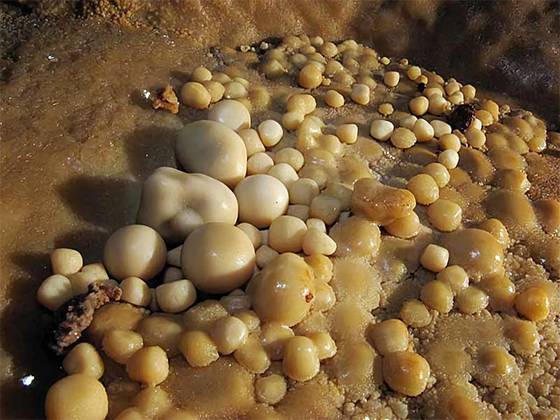
Hang Son Doong, Vietnam As the world’s largest cave, Hang Son Doong features grand terrace pools containing rare and unusually large cave pearls. Their surreal appearance adds to the otherworldly beauty of the cave’s massive chambers.
Yagodinska Cave, Bulgaria This European cave is renowned for its delicate clusters of small cave pearls that glisten under guided tour lighting, creating a magical atmosphere for visitors.
Why cave pearls are important
Beyond their beauty, cave pearls hold significant scientific value. Each layer of calcite can reveal information about past environmental conditions within the cave, such as water flow patterns, mineral composition, and microclimatic changes. Because of this, cave pearls serve as natural records that help geologists understand long-term cave development and climate patterns.
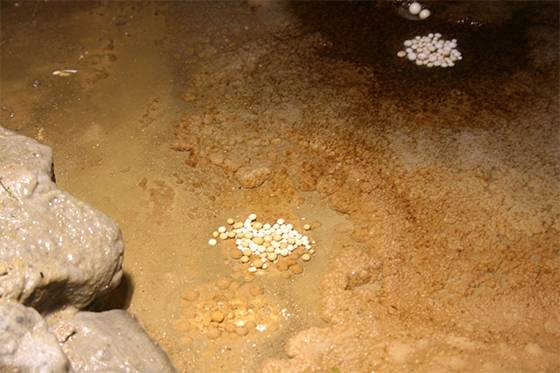
Their fragile structure makes them incredibly vulnerable to damage. Touching or moving a cave pearl can alter its mineral balance, degrade its surface, or disrupt further growth. For this reason, conservation efforts emphasize leaving these formations undisturbed and educating visitors about their ecological importance.
How to protect cave pearls
Preserving these natural wonders ensures that future generations can appreciate their rarity and scientific significance. Responsible cave exploration plays a crucial role in maintaining their integrity.
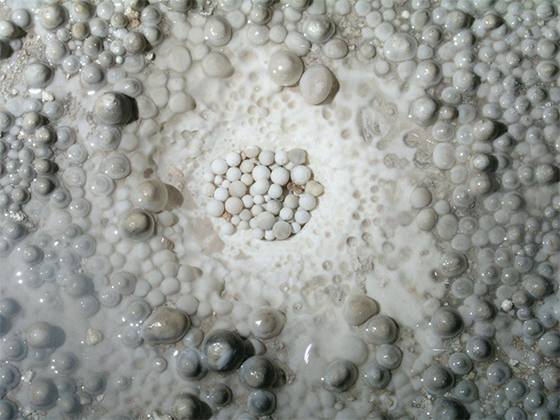
Avoid handling or relocating cave pearls, even if they appear loose within a pool. Oils from human skin can interrupt calcite deposition and cause permanent damage. Support protected cave sites by following established guidelines and respecting restricted areas. Sharing knowledge about cave preservation encourages greater awareness and helps safeguard these fragile formations from harm.
Cave pearls represent one of nature’s most elegant demonstrations of slow, persistent mineral growth. Their timeless beauty reminds us of the hidden worlds beneath our feet and the countless geological wonders waiting to be discovered. By understanding and protecting these delicate formations, we honor the incredible natural processes that shape our planet.


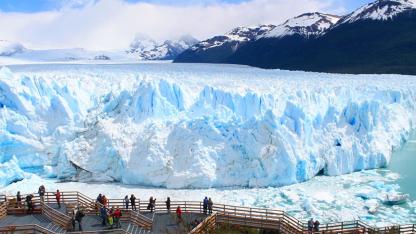

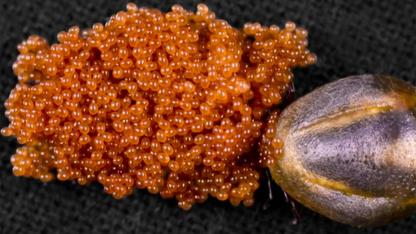






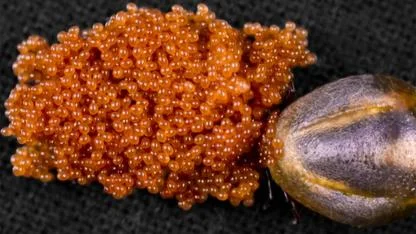


Yorumlar
Kalan Karakter: